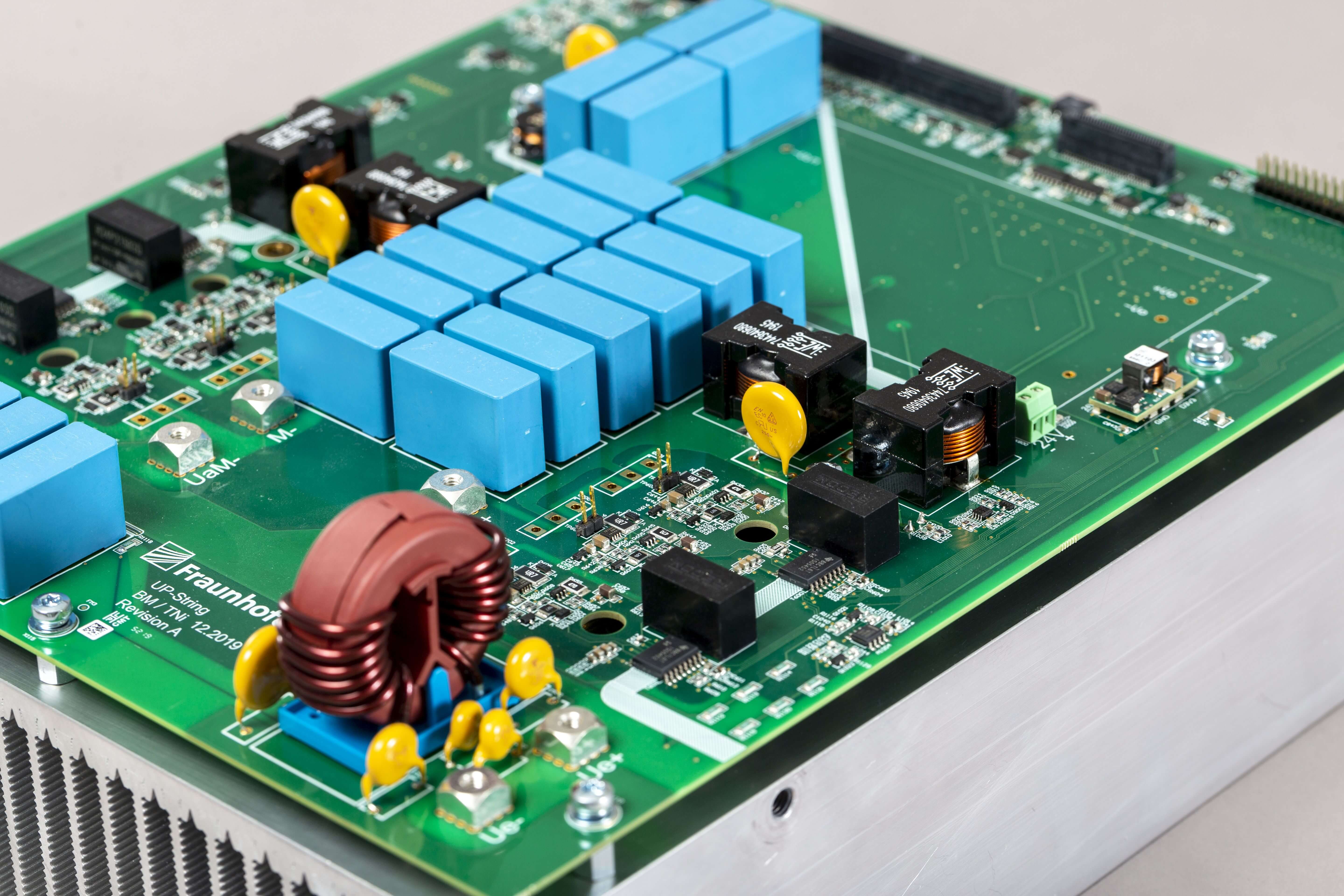| Duration: | 05/2017 - 07/2020 |
| Contracting Authority/ Sponsors: | Bundesministerium für Wirtschaft und Energie (BMWi) |
| Project Focus: |
UP-STRING – Bidirectional 1500 V Step-Down Converter with Cost-Optimized Circuit Topology
When optimizing the costs of PV systems, one popular option involves raising the system voltage on the supply side from the traditional 1000 V to 1500 V. A wide variety of suitable PV modules are now available for this purpose. Raising the DC supply voltage of the power level leads to lower current intensity and is thus directly tied to improved performance. It is also associated with lower costs for direct current infrastructure and an increase in the power density of the converter systems. Using buck rather than boost converters on the DC side enables the continued use of string inverters in 1000-V designs on the AC side.
Fraunhofer ISE aims to develop a buck converter for precisely this purpose as part of its UP-STRING research project, which has received funding from the Federal Ministry for Economic Affairs and Energy (BMWi).
Adding the buck converter would allow PV inverter manufacturers to offer their 1000-V designs for 1500-volt PV generators without the need to make changes to the AC side. For smaller devices (< 100 kW) in particular, this addition could prove to be a promising approach moving forward, since large PV parks are increasingly relying on decentralized inverters. When used in conjunction with 1500-V PV generators, the advantages would further include lower infrastructure costs.
This DC-to-DC converter can also be used in high-voltage batteries, since the topology is principally capable of realizing a bidirectional power flow. To this end, a battery with a voltage of up to 1500 V could be used to replace the PV generator on the input side of the topology. Here, too, this approach would make it possible to supplement 1000-V inverter designs with a DC-to-DC converter so that existing devices could handle 1500-V battery technology in the future.
